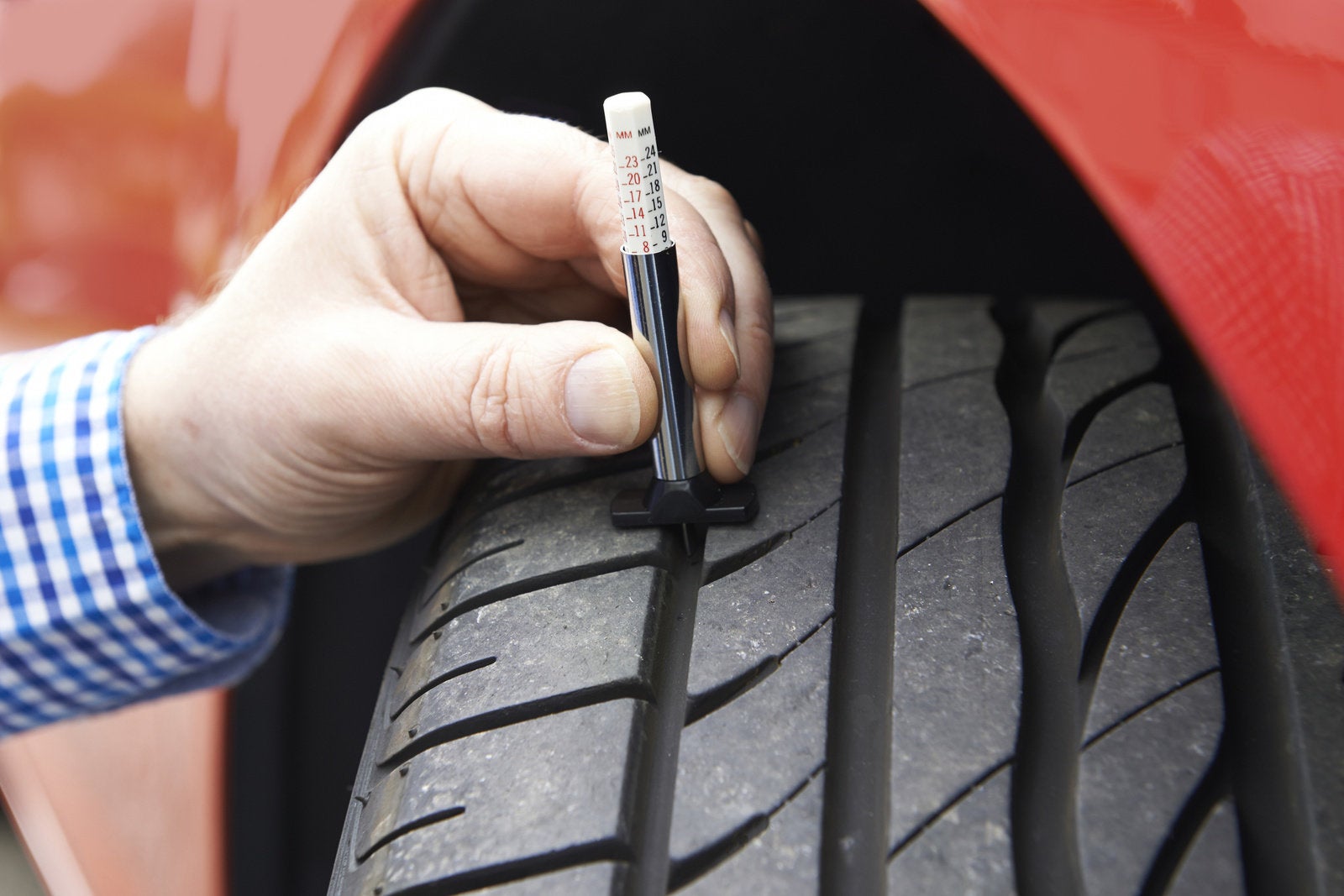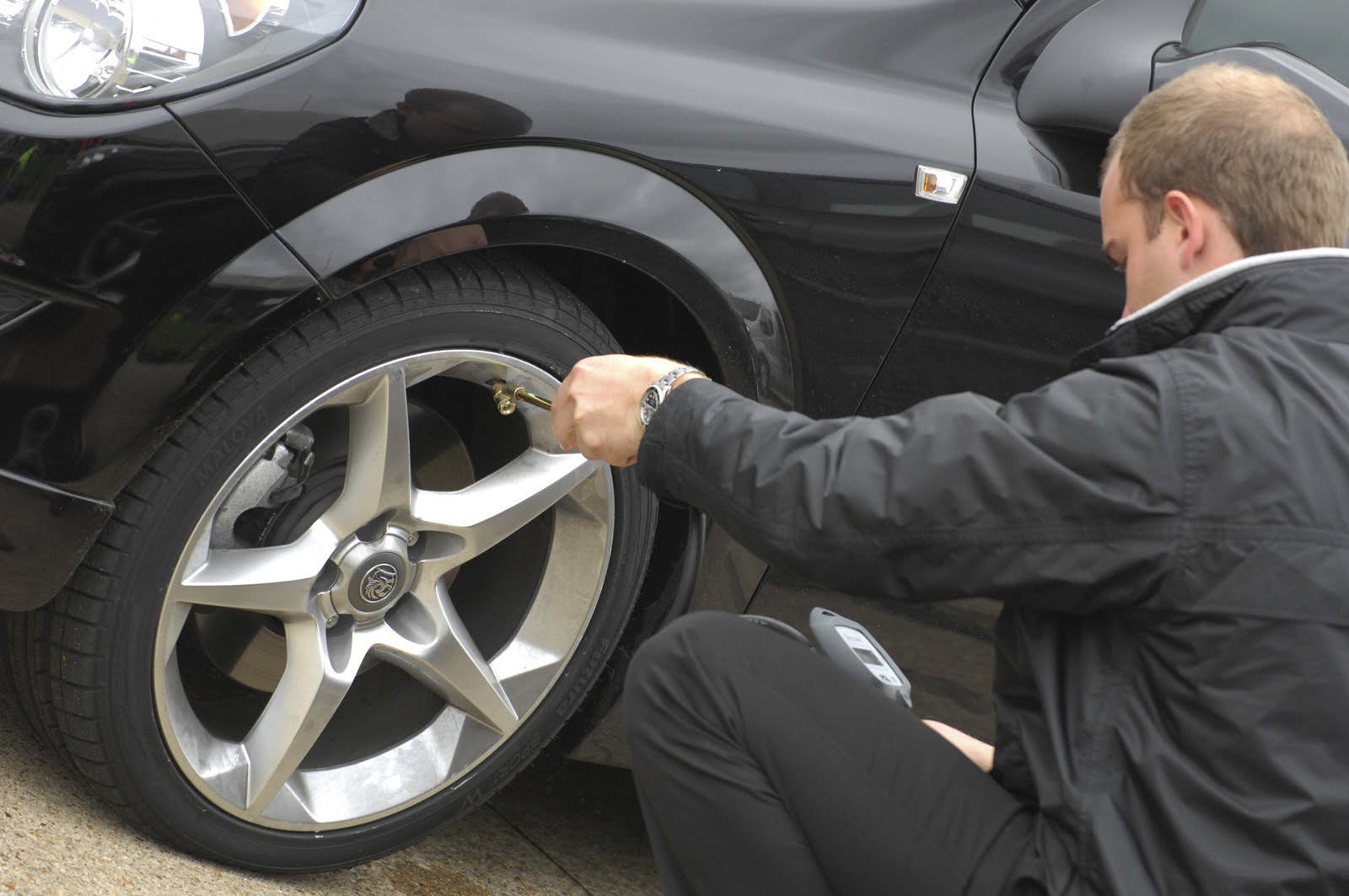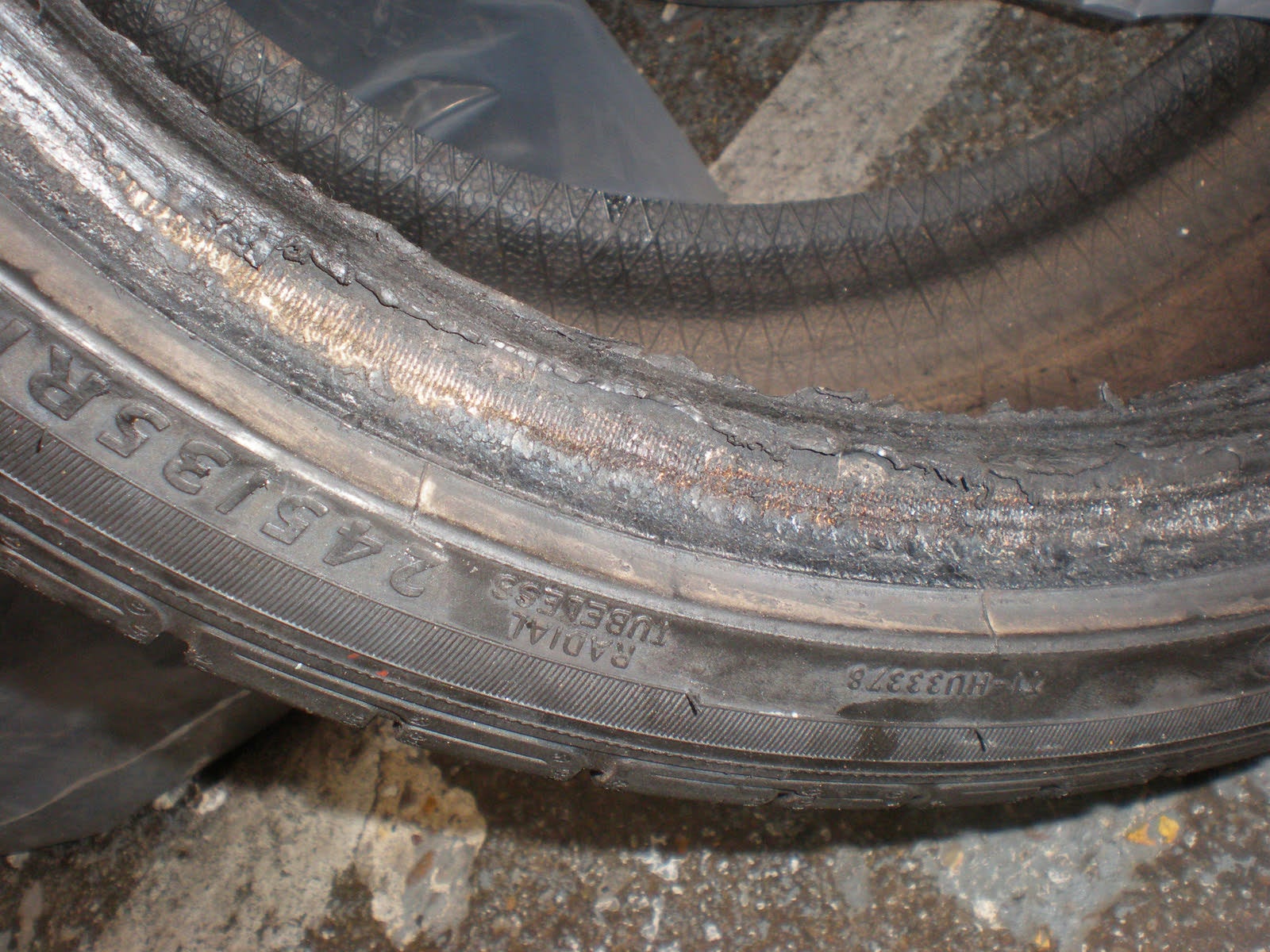Considering a car’s tyres are the only contact it has with the road, it is amazing how little attention people grant them. Whether it’s choosing the cheapest option whenever new tyres are needed or simply not carrying out basic safety checks, tyre ignorance is all too common amongst motorists.
To demonstrate as much, TyreSafe, the charity promoting tyre safety in the UK, reports that tyre-related incidents account for more than 1,000 casualties on Britain’s roads every year. With a basic tyre check encompassing three simple areas and taking just a few minutes of your time once a month, there’s no reason not to do it.
We’ll explain the three areas to check, as well as what to do if you find a fault with any of your car’s tyres.

Check 1: Tread Depth
First, look at the tread depth, which will indicate how much wear a tyre has left in its tread pattern. New tyres start off with about 8mm of tread. While the legal minimum tread depth is 1.6mm, some organisations and tyre manufacturers recommend 3mm as the minimum you should allow.
Tread depth is particularly important, because it affects how much grip a car has on the road surface in wet conditions and can prevent aquaplaning. In fact, TyreSafe reports that a car using tyres worn down to the legal limit and travelling 50 mph on a wet road needs more than 10 metres further stopping distance than it would if was using new tyres. This could easily be the difference between having a crash and avoiding one.
Remember too that tyres without enough tread depth will lack grip in corners, and illegal tyres can also result in you receiving a fine and penalty points from the police.
Some tyres will have tread wear indicators that show you when you're getting close to the limit, but you can measure tyre tread depth using a cheap tool from any car accessory store that you simply poke into the tread to give a reading. Alternatively, you can do the job with a 20p coin by slotting it into the tyre tread grooves at several points. If you're above the legal tyre tread depth, you won’t be able to see the raised outer rim of the coin in any of the measurements you try to take during the 20p test. However, if you can see the rim above the main grooves, you could be below the minimum tyre tread depth, and it’s time to get the tyre inspected by a professional.

Check 2: Tyre Pressures
Under-inflated tyres are not only more likely to result in adverse handling or sudden blowouts, but also cause an unnecessarily large contact patch with the road, increasing drag and ultimately making your car’s engine burn more fuel. While less common, over-inflated tyres are equally bad news, providing too stiff a structure for optimum grip and a smaller contact patch, meaning less grip. In both cases tyre wear will also be accelerated and the risk of a tyre bursting increases.
Given this, checking your car’s tyre pressures on a regular basis is one of the most important safety steps a driver can take. It can be done either with your own gauge (we recommend using a digital one to obtain a more accurate measurement) or by using the machine at a petrol-station forecourt. It’s a simple job: Unscrew the valve cap and attach the gauge, just as you would on a bicycle, and then compare the measurements taken with the recommended pressures given for your car, which will be printed in its handbook and on the inside edge of the driver’s door or doorframe.
It is important to always take measurements when the tyres are cold, not after a long journey when the air pressure inside the tyres will have increased, resulting in unrepresentative readings.
Note too that if your car was built from 2014 onwards it should include a built-in Tyre Pressure Monitoring System (TPMS) that automatically measures how much air is in each tyre. In the event pressures falls below a certain level, the TPMS system will alert you with an orange symbol showing an exclamation mark within a flat tyre icon, illuminated on the dashboard. At this point, you should pull over and check to make sure the tyres don’t have an obvious puncture.
If they do, you’ll need to either change the wheel or call for breakdown assistance, because driving on a flat tyre is not only dangerous but could cause significant damage to other parts of your car. If the tyres all still look suitably inflated and you can’t hear the tell-tale hissing of escaping air, drive carefully to your nearest petrol-station forecourt, where you can inspect and adjust the pressures as necessary.

Check 3: Tyre Condition
Lastly it’s time to consider tyre condition, looking for any cracks, cuts, or bulges either in the tread or on the sidewall (the part of the tyre that faces outwards with the tyre make printed on it). Ensure you check over the entire circumference of the tyre.
Pick out any stones from the tread and look for nails or glass that might have pierced the rubber and could cause a puncture or a blowout over time. If you do see any defects, get the car to a tyre specialist who can tell you whether it’s safe to continue using.
More Top Tyre Tips
- Remember to occasionally inspect the spare wheel if you have one, in particular checking it is at the recommended pressure.
- It is generally best to replace tyres in pairs rather than mixing a heavily worn tyre with a brand new one across the same axle, which could lead to unstable handling.
- If you drive a car with an electronically controlled 4-wheel-drive system, it is even worth considering changing all four tyres at the same time to avoid inadvertently damaging the transmission. Some such systems constantly monitor grip levels at each wheel and can become confused when there’s a mixture of new and partly worn tyres on the car. For this reason, many owners periodically rotate the wheels from front to rear to even out tyre wear.
If any of the above seems overly complicated, or you just can’t find the time, simply take your car to your local tyre-fitting centre and ask a technician to take a look for you. They shouldn’t charge for this and will be able to assess condition, tread depth, and pressures in no time at all.
At the best, this will give you peace of mind that your car’s tyres are in safe condition, while at the worst you’ll need to find some money for replacement tyres. Either way, making sure your tyres are in good shape could protect you from an expensive and potentially dangerous accident.
